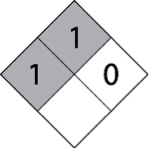Arnica Salve MSDS
Download the Arnica Salve Manufacturer Safety Data Sheet
Section 1: Identification
Product Identifier: Arnica Salve
Manufacturer Information:
Vermont Soap
616 Exchange Street
Middlebury, VT 05753
1(866)SOAP-4U2
Emergency Number: 802-388-4302
Recommended use of the chemical: Arnica Salve used to soothe everyday aches and stiffness.
Section 2: Hazard Identification
Hazard Classification: Non-hazardous
Signal word: None
Hazard Statement: Non-toxic
Pictograms

Precautionary statements
- Eyes: May cause minor irritation.
- Skin Contact: Not considered dangerous.
- Inhalation: Not considered dangerous.
- Ingestion: Not considered dangerous.
Description of any hazards not otherwise classified Not Applicable
Non-Toxic
Section 3: Composition/Information on Ingredients
Substances
- Chemical name: Arnica Salve, Butyrospermum Parkii
Common name and synonyms: Arnica Salve, Butyrospermum Parkii
Chemical Abstracts Service (CAS) number: Coconut oil 8001-31-8, shea butter 68424-60-2, hemp seed oil 68953-68-3, beeswax 8012-89-3, wintergreen oil 68917-75-9, arnica extract 68990-11-4, St john’s wort extract 84082-80-4, rosemary extract 84604-14-8
- Impurities and stabilizing additives, which are themselves classified and which contribute to the classification of the chemical Not Applicable
- Chemicals are a trade secret
Contents are as read on the label. Exact percentages are a trade secret
Ingredients: Coconut oil (coco nucifera oil)*, shea butter (butyrospermum parkii)*, hemp seed oil (cannabis sativa seed oil)*, beeswax (beeswax)*, wintergreen oil (gaultheria procumbens)*, arnica extract (arnica montana) *, St john’s wort extract (hypericum perforatum)*, rosemary extract (rosmarinus officinalis extract)*
Section 4: First Aid Measures
Eye Contact: Flush with plenty of milk or water for 15 minutes- If irritation persists get medical attention
Skin Contact: Not a direct hazard.
Inhalation: No vapors appear at normal working temperature.
Ingestion: Not considered dangerous.
Section 5 : Firefighting Measures
Flammability Classification: Flammable
Flash Point (F): 350°C
Extinguishing Medium: Dry powder, foam and carbon dioxide
Unusual Fire and Explosion Hazards: Not Applicable
Fire Fighting Procedures: Wear self-contained breathing apparatus and other protective clothing. Treat as oil.
Section 6: Accidental Release Measures
Personal Precautions:
- Watch out for slippery conditions if spillage occurs.
- Eyes: May cause minor irritation.
- Skin Contact: Not considered dangerous.
- Inhalation: Not considered dangerous.
- Ingestion: Not considered dangerous.
Emergency procedures
- Instructions for evacuations: None
- Consulting experts: None
- Protective clothing: None
Methods and materials used for containment :None
Cleanup procedures: Wash away with warm water or absorb with sand, rags or sweeping compound.
Waste Disposal: Follow Federal, State and Local regulations
Section 7: Handling and Storage
Precautions for safe handling
- Eyes: May cause minor irritation.
- Skin Contact: Not considered dangerous.
- Inhalation: Not considered dangerous.
- Ingestion: Not considered dangerous.
Safe storage, including any incompatibilities
- Respiratory Protection: None required
- Ventilation: None
- Eye Protection: Safety Glasses
Handling and Storage Precautions: Handle with care and avoid spillage on the floor (spillage). Consider normal working hygiene. Keep away from ignition sources. Store in a tightly closed containers in a cool dry place. Keep away from heat and direct light.
Section 8: Exposure Controls/ Personal Protection
- OSHA Permissible Exposure Limits (PELs), Not Applicable
- American Conference of Governmental Industrial Hygienists (ACGIH) Not Applicable
- Threshold Limit Values (TLVs) Not Applicable
- Exposure Limits
- Eye Contact: Flush with plenty of milk or water for 15 minutes- If irritation persists get medical attention
- Skin Contact: Not considered dangerous.
- Inhalation: Not considered dangerous.
- Ingestion: Not considered dangerous.
Appropriate engineering controls
- Respiratory Protection: None required
- Ventilation: None
- Eye Protection: Safety Glasses
Handling and Storage Precautions: Handle with care and avoid spillage on the floor (spillage). Consider normal working hygiene. Keep away from ignition sources. Store in a tightly closed containers in a cool dry place. Keep away from heat and direct light.
- Respiratory Protection: None required at room temperature and under normal conditions.
- Ventilation: None
- Eye Protection: Safety Glasses
Handling and Storage Precautions: Do not take internally. Store away from heat. Keep from freezing
Special requirements for Personal Protection Equipment
- Respiratory Protection None required at room temperature and under normal conditions.
- Ventilation: None
- Eye Protection: Safety Glasses
- Handling and Storage Precautions: Handle with care and avoid spillage on the floor (spillage). Consider normal working hygiene. Keep away from ignition sources. Store in a tightly closed containers in a cool dry place. Keep away from heat and direct light.
Section 9: Physical and Chemical Properties
Appearance: Solid at 20°C Light green color
Upper/lower flammability or explosive limits: Not Applicable
Odor: Smells like wintergreen and Arnica
Vapor pressure: Less than 0.01mmHg
pH: Insoluble in water
Melting point: 28-38 °C
Freezing point (F): 32
Initial boiling point and boiling range (F): Not Applicable
Flash point: 350°C
Flammability (solid, gas): Yes is oil based
Section 11: Toxicological Information
Exposure Information
- Skin: No skin irritation observed
- Eye: Slightly irritant
- Ingestion: Not considered dangerous.
- Inhalation: Not to be expected under normal use and storage conditions.
- Chronic: Nontoxic
The numerical measures of toxicity: Nontoxic
Description of the symptoms
- Eye Contact: Flush with plenty of milk or water for 15 minutes- If irritation persists get medical attention
- Skin Contact: Not considered dangerous.
- Inhalation: Not considered dangerous.
- Ingestion: Not considered dangerous.
Not know to be Carcinogenic
Section 12: Ecological Information
Data from toxicity tests: Safe and biodegradable
Section 13 Disposal Considerations
Description of appropriate disposal containers to use Discard in compliance with local ordinances
Recommendations of appropriate disposal methods to employ
- Wash away with warm water or absorb with sand, rags or sweeping compound.
- Waste Disposal: Follow Federal, State and Local regulations
Section 14: Transport Information
UN number: This is not a regulated hazardous Material for Transportation
UN proper shipping name: This is not a regulated hazardous Material for Transportation
Transport hazard class(es): Non-hazardous
Packing group number, if applicable, based on the degree of hazard Not Applicable
Section 15: Regulatory Information
No regulatory concerns exist
Section 16: Other Information
This is an oil based product
USDA Food Grade Certified Organic Product
Last Revision: 2/23/15